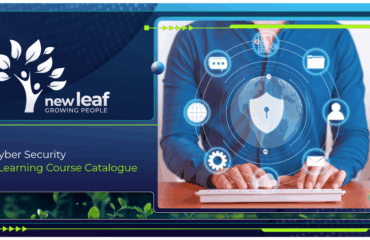
The global eLearning market is booming. According to Global Market Insights’ latest report, the market size is growing at 14% CAGR and will be valued at over USD 1 trillion by 2032. Some of the factors driving this growth are the demand for immersive learning and hands-on training, corporates upgrading their training methods, and eLearning being adopted across sectors. The evolution of the technology used for Learning and Development (L&D) means that providing education and training on-site is now within the reach of all educational institutions, businesses, and students.
For the best chance of boosting L&D function, your organisation needs a good learning management system (LMS), and the options are to build it in-house or license a learning platform from professionals. Although building one yourself may sound attractive initially, it is an extremely expensive and complex venture, whereas licensing a platform is affordable, quick, and reliable. If the latter is your choice, you’ll need to know how licensing works, and what the criteria are for choosing the right learning platform licence model.
To circle back, a learning platform licence model refers to the pricing models available to subscribe to an LMS. The provider bases its licence model fees on several aspects, such as functionality, industry, total usage metrics, location, and the overall service level agreement. Licences could be for on-premises, cloud, or hybrid use.
Why Licence Models Matter
There are tons of good reasons to go with licensing a learning platform rather than building it in-house, requiring fewer resources and ensuring a seamless onboarding of learners. Here are the other main benefits:
Cost-Effectiveness
The start-up costs you pay upfront when working with a learning platform provider are much less than you’d spend to develop the platform yourself. Also, licensing your platform from an eLearningsolutions provider often means you can expect to pay the same amount of money monthly or yearly once your platform is set up (depending on what model you choose), while getting a stack of added services, such as ongoing software and security updates, help with eLearning content development, and technical support.
Scalability
Most good licensed learning platforms can easily scale up or down, depending on the number of users the system or service needs to support simultaneously. The platform’s data system will also be able to handle long-term data collection and management.
Compliance and Certification
A learning platform vendor can provide compliance and certification support. Compliance involves adhering to company policy, and certification involves tracking individual skills and performance gaps.
Licence Model Types
Hundreds of different LMSs and learning platforms are available, and several different pricing models are used. Some vendors may even offer a mix of more than one, or custom-create a model to suit your training needs. Deciding on a licence agreement depends on your business, functional, technical, professional service and support requirements.
These are the most common licensing model types:
- Subscription-Based Licences: A set licence fee that gives you access for a certain time period, which can be monthly or annually.
- Concurrent/Named User Licences: For a specified number of accounts, whether these users access the system or not.
- Enterprise-Wide Licences: Allow an unlimited number of authorised users to access the platform.
- Active User/Seat-Based Licences: Charges are based on the actual number of users actively using the platform during a billing cycle, offering flexibility and scalability as usage increases or decreases.
Factors To Consider When Purchasing a Learning Platform Licence
Your unique L&D requirements will determine which licence is right for your organisation. As a starting point, compare your budget available for training and training technology and measure that against the cost of the types of licences.
For starters, what are your deployment preferences? Learning software can be hosted on-premise, giving you full control, or in the cloud, which comes with added security and data protection from the vendor. You could also opt for a hybrid on-premise/cloud service, which offers the best of both worlds.
The LMS software you choose must be able to be integrated into your company’s existing technology stack. This allows data to be exchanged between systems, enabling automation, reducing human error, and improving productivity.
As your eLearning platform evolves, it must support increased demands, such as a growing course catalogue, expanding user groups, customised eLearning features, as well as ongoing instructional design, content management, and development. A larger organisation might also need additional user roles for administrators and instructors, improved management tools, and advanced analysis and reporting solutions.
It’s essential that users are excited about the platform and that it’s easy for both students and administrators to use. To this end, features and tools offered on the platform should be flexible enough to change according to trainees’ needs.
Last Steps Before Deciding on a Learning Platform Licence Model
Investing in the right eLearning platform is a big decision and can make a difference in whether you reach your yearly L&D goal. Before you decide, conduct a thorough needs assessment and stakeholder analysis to ensure all your boxes are ticked. Next, evaluate the vendors and compare their licensing models. Services such as GetApp, Capterra, G2 and eLearning Industry are good places to start, or cut to the chase and contact New Leaf Technologies — we’ve done the legwork for you.
When approaching a vendor directly, be clear about your expectations and requirements, and don’t hesitate to negotiate the terms and conditions of the licensing contract. Once committed, perform regular service reviews and speak to your supplier if you need to make adjustments.
As with broader software trends, LMS licence models are constantly changing and improving, and you may want to sign up with a vendor that can additionally assist you with Learning Experience Design (the practical process of designing engaging eLearning content that is tailored to a diverse audience’s needs and preferences), and instructional design and development, which is more focused on the content and goes hand-in-hand with eLearning content development. These additional services ensure you not only have the right tool to deliver your LMS but also have the right content to upskill or reskill your employees and meet your L&D targets.
Ultimately, aligning your business model and requirements with a vendor’s features, services and licence model is the key to finding the right LMS partner at the right price.




